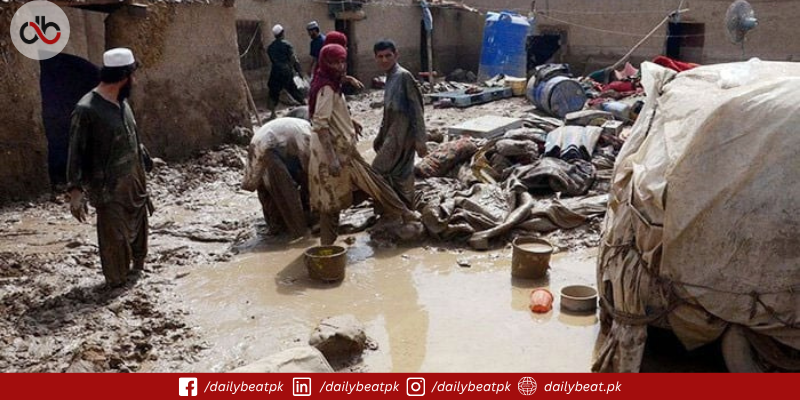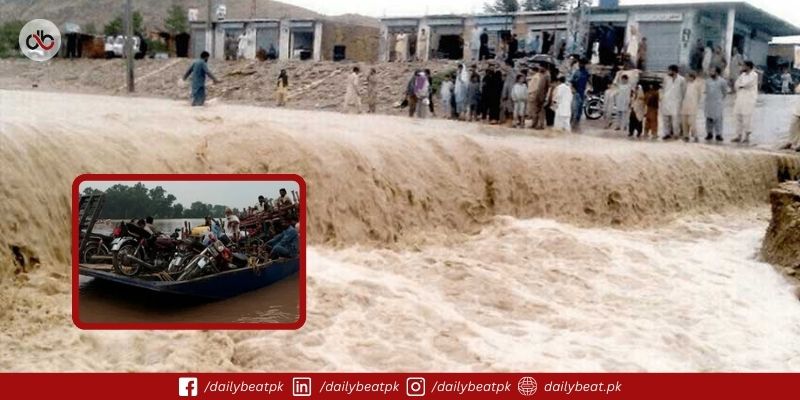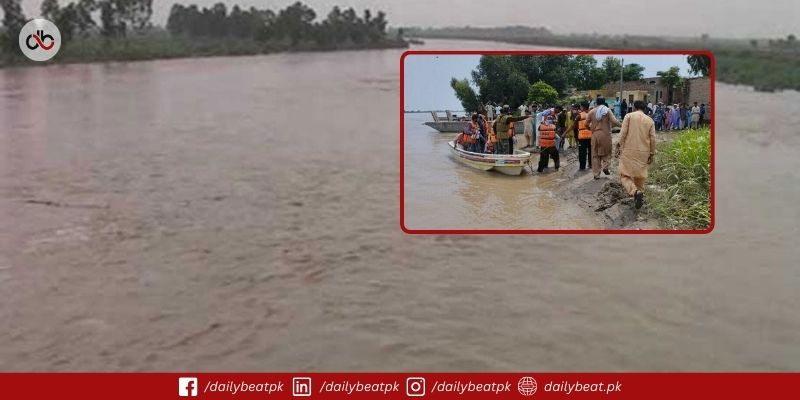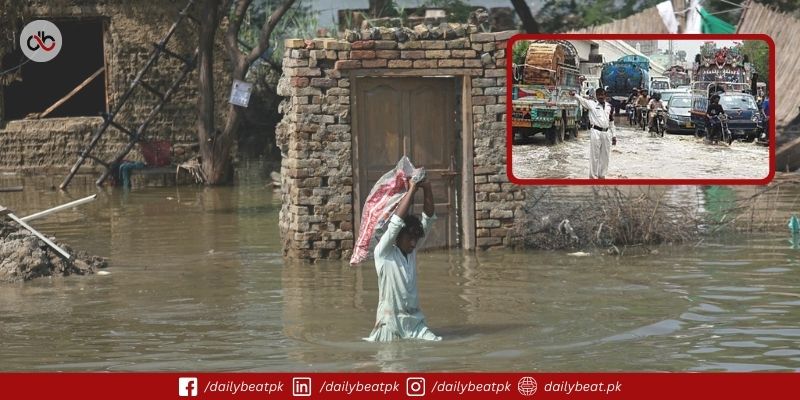At least 11 people lost their lives as heavy rains hit Punjab and Balochistan on Wednesday. The monsoon downpour caused flooding, power breakdowns, and severe travel disruptions across several districts. Many others were injured in rain-related incidents.
Lahore Flooded After Continuous Rain
In Lahore, the rains started early in the morning and continued throughout the day. The Water and Sanitation Agency (WASA) reported an average rainfall of 58.8 mm in the city. Nishtar Town received the highest amount at 84 mm, followed by Lakshmi Chowk with 78mm and Paniwala Talab with 74 mm.
Low-lying areas and major roads were submerged. Key places, such as Jail Road, Qurtaba Chowk, and Gulberg, saw heavy water accumulation. In many areas, rainwater mixed with sewage creates serious health concerns.
A tragic incident occurred at Yakki Gate, where a child died after being electrocuted by exposed wiring. Power outages were also widespread. Many electricity feeders tripped, cutting off supply to entire neighborhoods.
“We’ve had no electricity since morning, and streets are full of dirty water,” said Rukhsana Bibi, a resident of Mughalpura, which recorded 60 mm of rain.
Poor Drainage and Public Complaints
Residents of areas like Barki Road complained that no action was taken for hours. Drainage machinery only reached well-off neighborhoods by the evening. Many accused city authorities of ignoring poor areas.
The Lahore Waste Management Company (LWMC) claimed to have deployed teams to remove garbage and open drains. However, locals reported slight improvement. “Roads are still underwater, and no official has shown up,” said Asif Mahmood, a shopkeeper at Lakshmi Chowk.
In Farrukhabad and Johar Town, the drainage system failed, exacerbating the already dire conditions.
Rain Affects Other Punjab Cities
Heavy rains have also hit Punjab beyond Lahore. In the last 24 hours, Khanewal saw 51 mm of rainfall, Rawalpindi 42 mm, Sahiwal 44 mm, Murree 41 mm, and Okara 30 mm. Other affected cities included Mandi Bahauddin, Mangla, Toba Tek Singh, Gujranwala, Sargodha, Bahawalpur, and Multan.
According to Rescue 1122, nine people died in various districts of Punjab. In Sheikhupura, two children were killed when their roof collapsed. Moreover, four people were rescued from under a collapsed house. In Jhelum Valley, a cloudburst destroyed homes, cars, and roads.
The Pakistan Meteorological Department has issued a warning of heavy rainfall in the next 24 hours. Cities including Lahore, Sialkot, Jhelum, Narowal, and Mandi Bahauddin are at risk. Authorities have also imposed Section 144 around rivers and canals to stop people from visiting dangerous areas.
Balochistan Also Suffers
In Balochistan, two people died in separate incidents caused by rain. There are strong winds and rain brought down a wall, killing one person and injuring another in Khuzdar. In Mastung, a slippery road caused a tanker to overturn and fall on a pedestrian, who died on the spot.
Several districts in Balochistan, including Jhal Magsi, Sibi, and Musakhel, are now at risk of flash flooding due to ongoing rain and rising water levels in streams.
River Water Levels Rising
The National Disaster Management Authority (NDMA) has issued a warning about rising water levels in the Indus, Chenab, Kabul, and Jhelum rivers. Low-level flooding is likely at Tarbela, Kalabagh, and Taunsa. Similar risks exist at Marala and Mangla dams.
Torrents in the hills of Dera Ghazi Khan and Rajanpur may also flood due to heavy rainfall in the coming days.
Glacial Flooding in Gilgit-Baltistan
While heavy rains hit Punjab and Balochistan, Gilgit-Baltistan is facing another crisis. Heatwaves have caused glaciers to melt at an accelerated rate, triggering flash floods. Roads, homes, crops, and power lines have been damaged. Many villages are now cut off, without water or electricity.
Floodwater has damaged bridges and roads in Hunza, Nagar, and Gilgit. Tourists and locals are stranded. Officials say that rising water levels in rivers remain a serious threat.
In Chilas, floods destroyed homes and farmland. Although the Karakoram Highway has reopened, many areas remain inaccessible.
Authorities Take Action
To reduce the damage, the government is using mobile networks to send geo-fenced alerts. Jazz and NDMA are collaborating to warn millions of people about potential flooding. The system will help those in high-risk areas take precautions promptly.















